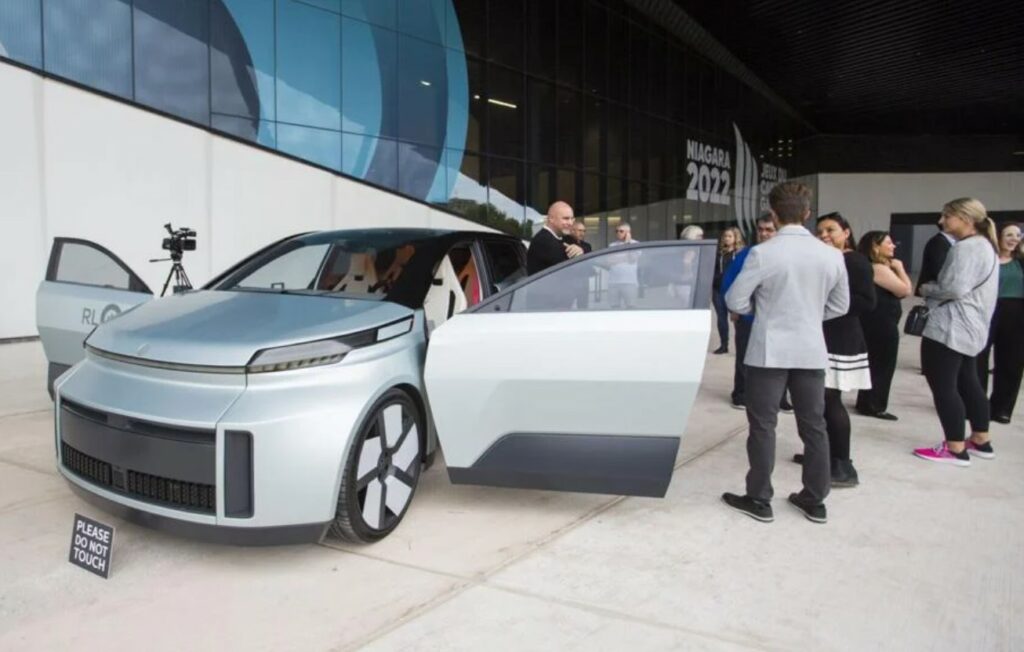Source: The Standard
A prototype electric car, featuring the best of Canada’s high-tech automotive capabilities, gave Niagara an electrifying view of the future Tuesday.
“It’s a $20-million operating prototype made with Canadian components and systems,” said Flavio Volpe, president of Automotive Parts Manufacturers’ Association (APMA), during an event at Canada Games Park in Thorold hosted by Niagara Region Economic Development.
“We wanted to tell the Canadian story in a way that sticks with people and represents how massive our supplier sector is, including everything from raw materials to advanced sciences. To do that, we decided to build a car from the ground up.”
The result is Project Arrow, the first all-Canadian electric vehicle prototype and currently on a two-year global tour.
The zero-emission vehicle was designed, engineered and built with the joint efforts of Canada’s automotive supply sector and post-secondary institutions.
Volpe called the project the most significant industrial collaboration in the history of the Canadian automotive sector, with 60 partners contributing cutting-edge technology and the federal and provincial governments in Ontario and Quebec contributing a combined $8.2 million.
The 550-horsepower Project Arrow prototype has an 83-kilowatt battery and a maximum speed of 180 km/h.
Volpe said the car is a rolling advertisement for the companies that designed and built its components.
“In two years, the companies that participated in the project have received $500 million in incremental contracts — and that’s what it’s all about,” Volpe said. “We think the prototype program helped create an additional 400 jobs in Canada.
“We’re going to build a half-dozen and show the new technologies around the world.”
The region’s economic development team identified the electronic vehicle industry as an emerging sector in its 10-year economic development strategy.
The strategy received a massive boost in May when Asahi Kasei Corp. announced a $1.56-billion investment in a new 185,800-square-metre battery separator facility in Port Colborne.
“Given the work that we’re doing in the region on electrification and energy transition, and the Asahi Kasei investment, we thought it would be a great opportunity to bring Project Arrow here and talk about the opportunities here for Niagara and electrification,” said George Spezza, the region’s director of economic development.
The region also recently received funding from the federal government to hire an electric vehicle mobility sector specialist, Felix Chinen.
“Part of his role is to look at our local workforce, industry and supply chain and see how it all ties into the blueprint for building the EV industry here in Niagara,” Spezza said.
“He’s also out talking to companies in the automotive industry and helping them look at the transition to the EV supply chain as well as working to attract additional EV investments into the region.”

